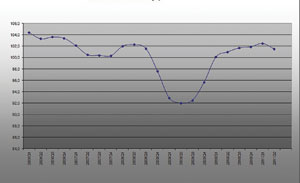Hungary: building on traditions
Demand for cement products as an essential construction material is a representative indicator of economic development and socio-economic “well-being” in Hungary. The Hungarian Cement Association gives a brief overview of recent developments in the country’s cement sector in the context of the nation’s recent economic performance and outlines the key trends going forward.

In 2011, GDP growth in Hungary has been weaker than the European average. In the first quarter, the Hungarian economy grew by 0.3 per cent and was followed by a worse second quarter, bringing economic stagnation to the country. Growth lagged behind the EU27’s GDP growth of 0.8 per cent and 0.2 per cent in 1Q and 2Q, respectively. Compared YoY, the Hungarian economy expanded by 1.6 per cent in the first three months and 1.2 per cent in the 2Q11 – data also significantly lower than the EU average, which saw 1Q growth at 2.5 per cent and subsequently, 1.7 per cent in 2Q.

Figure 1: GDP trend in Hungary, 2006-11
It is no surprise that the evolution of Hungarian GDP expansion is closely related to the global economic crisis. The first QoQ decline was noted in 3Q08 (see Figure 1). It was followed by a sharp fall which bottomed out in the 2Q09 and resumed an upward path thereafter. The subsequent acceleration of GDP growth slowed considerably shortly after the change of government in 2H10.

